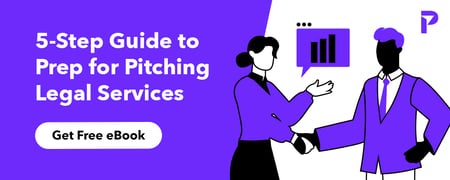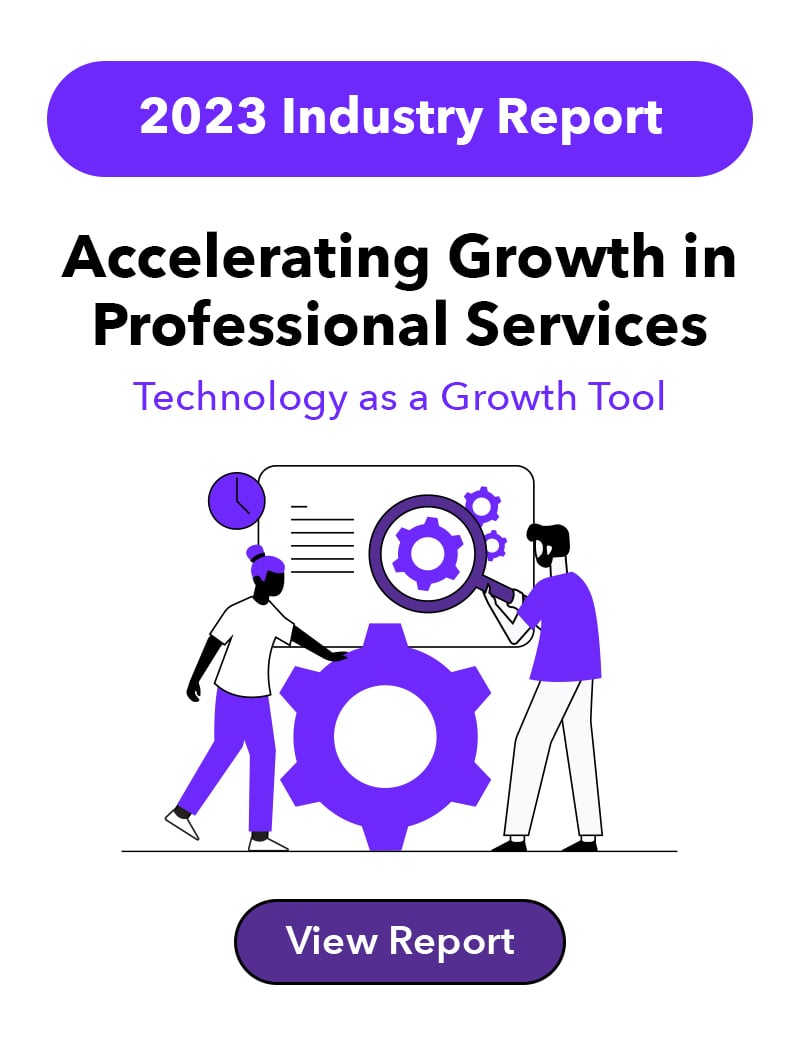Sales (or business development) and marketing are nearly impossible to separate in professional services. The firms with the most sustainable growth strategies have a strong synergy between the revenue department and marketing.
Sales enablement content is a crucial component to fueling that synergy.
The crux of this type of content’s value is to provide ready-to-go, easy-to-digest answers to a multitude of questions your potential clients may have about your services. This acts as a strong arsenal of information for your BD team, empowering them to keep the conversation and subsequent sales process moving along smoothly.
What is Sales Enablement Content?
Sales enablement content is one critical part of the sales enablement process. According to HubSpot, sales enablement processes provide your firm’s sales team with the resources they need to close more deals.
This content is laser-focused on communicating the value of your services and demonstrating the ways that they can be applied to solve specific problems. It’s used alongside other sales enablement processes like reporting, review processes and lead qualification processes to effectively nurture prospects.
Creating Sales Enablement Content
Sales enablement content is not just content marketing packaged differently. It’s a more targeted subset of an overall content marketing strategy.
While the goals of your general content marketing strategy may vary - from increasing organic traffic to providing thought leadership to generating leads - sales enablement has a very specific goal. To help your team win new business.
Your professional services marketing team creates sales enablement documents and assets using data like customer trend research. This data is gleaned from the multitude of information marketing collects about your clients and potential clients via online engagement, direct feedback and customer stories.
Sales enablement assets directly address what that data is telling you. For example, your firm’s marketing data might show that client retention rates drop after the first year due to cost. Drafting content about how the upfront costs for your services can save clients money in the long term is a way to effectively address the issue.
Why You Need an Efficient Sales Enablement Content Strategy in Professional Services
Professional services teams need to develop a sales enablement content strategy not only because it helps win more clients but it’s a good strategy that boosts your productivity.
Smaller firms may not have the resources to hire a dedicated sales team, instead relying on the marketing team and other staff members to “sell” their services to potential clients. This type of content helps teams achieve their goals both on the sales and marketing side.
Harnessing Technology
Staff members can get bogged down by poor, slow, manual processes and tedious tasks. Developing a content strategy that uses technology to streamline your processes while generating accurate data is the key to boosting productivity in professional services.
And when productivity increases, your firm benefits. It frees up your employees’ time, allowing them to focus on:
- Generating higher profits
- Charging lower prices
- Increasing customer satisfaction
- Offering more attractive wages
- And getting increased access to capital
Read more about how using templates can save you even more time when drafting sales enablement content.
Examples of Effective Sales Enablement Content
Below are six highly effective examples of sales enablement content that your firm needs to add to its sales strategy.
Webinars
Webinars are online seminars that are both educational and engaging, and they’re worth having in your content enablement arsenal.
According to a benchmarking report by ON24, 85% of marketers who use webinars as a marketing tool say they are crucial for their marketing efforts.
Webinars typically include a presentation by one or more hosts along with a Q&A segment from the audience. Many times, presenters will include polls or answer questions throughout the webinar to keep the audience engaged.
The ability to not only educate your audience but get their immediate feedback is essential to knowing what type of solutions to provide them.
Marketers say that webinars help them:
- Pull in more leads
- Extend brand reach
- Scale marketing efforts
- Connect with targeted accounts
Your sales team can invite clients to webinars to view live as well as repurpose them for on-demand content or small, topic-specific video clips.
Blog Posts
Blog posts give clients and potential clients an informative look or shallow dive into your services and how they provide solutions to issues. This is a great low pressure asset to send to fresh leads to warm them up to your value proposition in a more casual way.
Around 60% of people read blogs at least once a week, making them a great way for your sales team to educate clients about your services.
What’s more, blogs help drive more people to your website by landing your website at the top of Google and other search engines. Blogs that are written for search engine optimization can result in a 43% increase in indexed pages and a 97% increase in indexed links.
The more visible your firm is online, the more potential clients you’ll be able to reach. And adding an effective call to action to your blog can move more clients down your sales funnel.
Explainer Videos
Explainer videos are short online marketing videos that concisely explain your company’s product or service. They’re typically about one to two minutes long and explain what you do and why potential clients need it. And they’re becoming extremely popular at converting visitors to customers.
Take a look at our Pitchly’s landmark explainer video below for an example:
Some websites claim their conversion rates increased by as much as 144% after including an explainer video on their website. Adding explainer videos to your website can kick off the sales process, without directly involving your staff.
Explainer videos are also a highly effective portion of your sales enablement strategy during initiatives like tradeshows, cold reach-outs and other situations in which you’re making contact with people who have little to no insight into what your firm does.
Case Studies
A compelling case study is like a hybrid between a blog and a testimonial.
It tells a story about what your firm did for a client. The story illustrates the issue or pain point the client was having, how they came to your firm for help and the solutions you offered them.
Case studies can be used in presentations, posted on your website resources page, inserted into nurture workflows or sent to clients who are looking for more information.
The major benefit of case studies is that they provide social proof, letting buyers know you’re a good choice. According to HubSpot, 13% of marketers name case studies as one of the primary forms of media used within their current sales enablement content strategy.
Proposals
A proposal is used a little further down the sale funnel. It conveys to a potential client, in great detail, why they should do business with your firm, as opposed to the competition.
A well-written proposal should include what your services cost, how your firm’s expertise can get the job done and the extras your firm can bring to the table.
Proposals rely on great data, like facts, figures, graphs and charts, to show clients exactly what you can do. Using data management software, like Pitchly, allows firms to collect, retain and maintain data, like highlights from attorneys and staff.
Automating the data processes that populate the content on these proposals allows firms to quickly put together comprehensive proposals that will seal more deals and boost productivity.
Tombstones
Proposals and pitches commonly use tombstones to seal the deal with potential clients.
Tombstones help organizations show off previous work that they have completed, and are typically curated to reflect the industry, goals, project scope, etc. that match the prospective client.
So, when you generate and add tombstones to proposals or accompanying presentations, you’re communicating, “We’ve done this before with clients that are just like you, and we’ve done it well.” This often gives these individuals that little bit of extra confidence they need to move forward in the process.
While this is a highly valuable part of a sales enablement strategy, its typically manual nature makes it really tedious and time-consuming.
Pitchly’s tombstone builder quickly and seamlessly puts your data to work and saves hours each week in creating this valuable pitch asset. Its dynamic, customizable templates connect to your database that houses your previous work, saving hours manually reformatting your content.
Relevant data is easily accessed and filtered, reducing the need to search through disparate databases. Tombstones are then easily exported into your proposal via PowerPoint or Word.
Developing a smart sales enablement content strategy will ease and streamline the sales process for your team. Having sales enablement assets on hand is like having an extremely knowledgeable assistant who is always there when you need them.
Kickstarting this strategy starts with having great data, and that’s where Pitchly can help. Our data management solutions, like being able to automate your tombstone creation process, is a huge time saver for your staff.
Want to learn more about Pitchly's platform and how we can enable content that allows your sales team to seal more deals? Reach out to schedule a free consultation today!
 Mar 21, 2023
Mar 21, 2023





